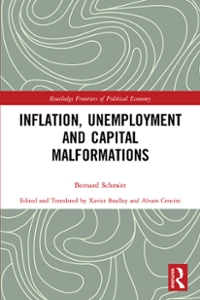Answered step by step
Verified Expert Solution
Question
1 Approved Answer
a. Write-down the equation governing the relationship between the growth rate of the aggregate population from time t to t+1 and the income per capita
- a. Write-down the equation governing the relationship between the growth rate of the aggregate population from time t to t+1 and the income per capita at time t. (5 points)
- b. Plot the relationship found in a. in a two-dimensional diagram. (5 points)
- c. Show that the output per capita at time t can be written as a function of the productivity level at time t and the land per capita at time t. (5 points)
-
- Using the above productivity equation and the relationship found in c., explain how the aggregate population size at time t affects the output per capita at time t ? (5 points)
- Derive the steady-state output per capita and the steady-state aggregate population size compatible with no income per capita growth? (10 points)
- According to your answers to d. and e. is it possible for an economy to be "asphyxiated" by its elite class? If so, then what would be the "optimal" fraction of the aggregate population to be part of the elite class? (10 points)
- Using the production function per capita found in c., derive a relationship between the growth rate of the output per capita from time t to t+1 and the growth rate of the aggregate population from time t to t+1. (5 points)
- Derive the steady-state population growth rate and the steady-state output per capita level compatible with no income per capita growth? (10 points)
- Does the economy achieve a higher standard of living in h. than in e.? Explain (5 points)


Step by Step Solution
There are 3 Steps involved in it
Step: 1

Get Instant Access to Expert-Tailored Solutions
See step-by-step solutions with expert insights and AI powered tools for academic success
Step: 2

Step: 3

Ace Your Homework with AI
Get the answers you need in no time with our AI-driven, step-by-step assistance
Get Started


